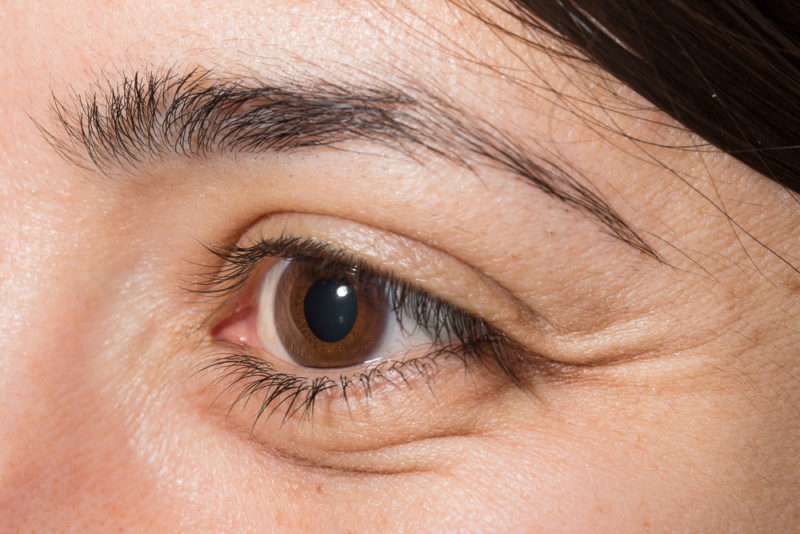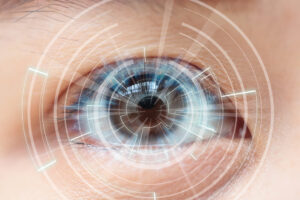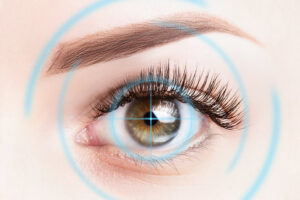
Puffy Crying Eyes
We’ve all been there, shedding a few tears after an emotional moment or perhaps letting out pent-up feelings. While crying can be cathartic, the aftermath of puffy eyes can be quite a bother. There’s an abundance of advice and myths floating around about how to erase the puffiness and redness post-crying miraculously. However, we’re here to comprehensively understand why our eyes swell after crying and the most effective methods to combat it. Let’s delve into the science behind puffy eyes and discover the best solutions. Whether it is an easy fix or a more advanced option such as IPL, otherwise known as Intense Pulsed Light Treatment, Diamond Vision is your local eye care expert.
The Science of Tears: Unveiling Three Types
Tears are far from being one-size-fits-all. In fact, there are three distinct types of tears that serve various functions within our eyes:
Basal Tears: The Unsung Moisturizing Heroes
Constantly secreted to lubricate and oxygenate the corneas, basal tears play a pivotal role in maintaining clear vision. Originating from the lacrimal glands located on the upper and lower eyelids, these tears keep the eyes moisturized, create a smooth surface for optimal vision, and help flush out minor irritants. After fulfilling their duties, these tears drain into the lacrimal sacs, ultimately reaching the nasal passages (explaining the stuffy nose accompanying crying).
Reflexive Tears: Nature’s Response to Pain
These tears are released when our eyes encounter pain, or foreign objects invade them. Acting as a defense mechanism, reflexive tears flush out irritants and promote healing. While their composition is similar to basal tears, reflexive tears contain slightly more nutrients, aiding in the healing process following an eye injury.
Emotional Tears: Unraveling the Tears of Feelings
Emotional tears triggered by intense emotions such as happiness or sadness are another example of what can cause puffy eyes. Beyond their psychological significance, these tears also serve a biological purpose. Enriched with water and protein-based hormones, emotional tears counteract chemical imbalances induced by heightened emotions.
The Swelling Conundrum: Why Do Our Eyes Puff Up?
The question of why our eyes swell after crying has a multi-layered answer. There are two primary reasons that contribute to this phenomenon:
1. Lacrimal Gland Overdrive:
When we cry, our lacrimal glands work overtime to produce a continuous stream of tears. This intensified activity can lead to inflammation of the glands, resulting in swelling.
2. Osmosis in Action:
Emotional tears contain a higher water concentration than basal tears. Osmosis comes into play, where water flows from areas of higher concentration to lower concentration. In this scenario, the saltier ocular tissues around the eyes attract the water from the tears, causing the eyes to hold onto the excess fluid and resulting in puffy, swollen eyes.
Bid Adieu to Puffy Eyes: Effective Strategies
When faced with puffy eyes, swift action can make a significant difference. Depending on the time you have, consider these approaches to alleviate puffiness:
Quick Fix: The Cold Water Cure
- Begin by running your fingers under cold water or applying a chilled eye ice cube.
- Gently massage your eye area, moving from the inside corners to the outer corners to encourage excess drainage from the lacrimal glands.
- If available, use an eye serum containing yeast extracts to reduce swelling effectively.
Overnight Transformation: Reducing Puffiness While You Sleep
- Cold Water Splash: Start with a splash of cold water on your face to invigorate the skin.
- Cool Compress: Apply a bag of frozen peas wrapped in a towel to your eyes for 15 minutes. This contouring method aids in reducing general swelling.
- Green Tea Soak: Place two cold water-steeped green tea bags over your closed eyelids for 10 minutes. The antioxidants in green tea constrict blood vessels and diminish remaining swelling.
- Cucumber and Potato Treatment: Apply cucumber slices (rich in antioxidants) followed by potato slices (to brighten the eyes) for a few minutes each.
By following these steps, you’ll wake up to diminished swelling and redness around your eyes.
Beyond Puffy Eyes: Addressing Eye Discomfort
If you find yourself battling perpetually watery, itchy eyes due to bothersome contacts, consider a change. Say goodbye to uncomfortable tears and welcome clear vision with Diamond Vision. Our expert team offers a range of vision-correcting procedures tailored to your specific needs. To initiate your journey towards improved vision, schedule a free consultation at Diamond Vision for an eye exam. With one of our centers, such as the Atlanta Eye Health Clinic, you’ll regain your vision and leave discomfort behind.
Understanding the intricacies of why our eyes swell after crying empowers us to take informed actions to combat puffiness effectively. By embracing these scientifically-backed methods, you can bid farewell to puffy crying eyes and welcome a refreshed, vibrant appearance.
In Summary
When we cry, our eyes sometimes get puffy and swollen. This might seem strange, but it’s all because of different types of tears and how our eyes work. But don’t worry, there are ways to make it better! You can try simple things at home like cold water, tea bags, cucumber slices, or potato slices. If you need more help, places like Diamond Vision offer special treatments to fix the puffiness. They even have something called Intense Pulsed Light Treatment (IPL) that can really help. So whether it’s a quick fix at home or professional help, you’ll know what to do if you ever have puffy eyes after crying. Now you’re an expert on puffy crying eyes, too!
Legal Disclaimer
Please note that the information provided in this article is for educational purposes only and should not replace professional medical advice. If you have underlying medical conditions, it’s essential to consult a healthcare provider before trying any remedies mentioned in this article. While these methods have shown effectiveness for many individuals, individual results may vary. We are not responsible for any adverse effects or damage from implementing the techniques described here.
Contact Us
If you have more questions about LASIK procedures, get in touch with us.
Related Blogs

Timing is Everything: When to Consider LASIK After Nursing for Optimal Results
Timing is everything when considering LASIK eye surgery after nursing, and understanding the optimal period for this procedure is vital for both mother and baby.

Cataract Surgery: Restoring Clarity and Confidence
Cataract surgery is a transformative procedure that offers a new lease on clear vision and renewed confidence. As cataracts cloud the eye’s lens, causing blurred

Intralase LASIK Explained: What to Expect Before, During, and After the Procedure
Intralase LASIK is a cutting-edge procedure that offers a safe, effective, and precise way to enhance vision compared to traditional LASIK methods. Understanding what to
